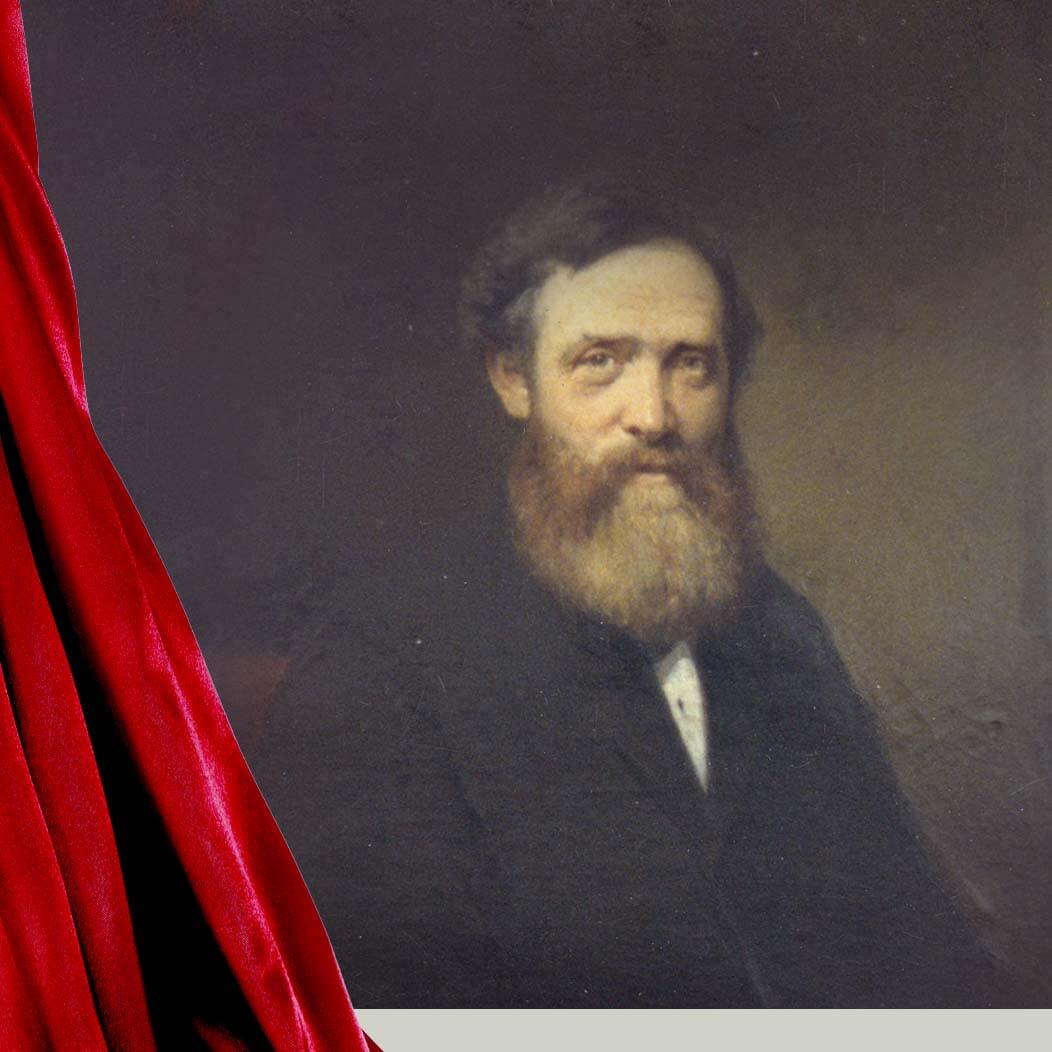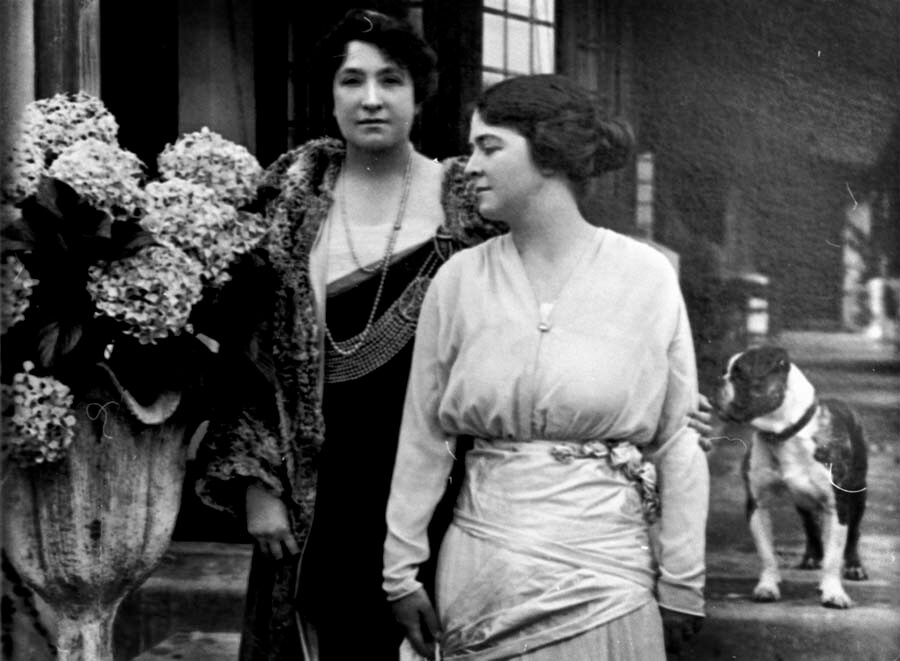
David Mitchell | Cave Hill Quarry
As well as his building and farming interests, David Mitchell also took part in local politics and served two terms as a Councillor for the Shire of Lilydale from 1875 until 1883. In his last year, he was elected the Shire President.
Little did people know this was to be a turning point in his life and that of the Lilydale community.

While at a council meeting, the then shire secretary Henry Paul mentioned a cave hill just out of the township. He explained to David Mitchell he believed it was so called because there was a cave in the limestone rock.
The land was currently owned by John Nicholson whose father was a Premier of Victoria. In 1878 David Mitchell purchased the land and wasted no time establishing the Cave Hill Marble and Limestone Quarries and Cave Hill Farm.
A.E. Wilson writing in the Lilydale Express many years later in 1944 said that he believed David Mitchell paid £7000 for Nicholson’s land. (1)
The shire of Lillydale ratebooks recorded the sale of 1240 acres from John Nicholson on July 15, 1878. At the same time, David Mitchell became the owner of another 320 acres owned by a Mr Twentyman and leased by Charles B. Fisher. This was the first land David Mitchell purchased in the shire’s South Western Riding although he already had substantial holdings in the Eastern and North Western ridings.
1. Lilydale Express January 14, 1944.
Cave Hill Quarry opening
On March 26, 1878, his Marble and Limestone Quarries at Cave Hill Farm, Lilydale were officially opened and he became a miner and builder of a different kind. Through Cave Hill David Mitchell established a family empire that survived through to the 21st century.
A convoy of coaches carried dignitaries, including the Mayor of Melbourne, to Lilydale for the opening grand luncheon followed by coursing but rabbits were scarce.
Having his own limestone quarry gave him greater building opportunities and his own supply of vital building material.

The Opening of Cave Hill
The opening of the marble and limestone quarries at Cave-hill Farm, near Lilydale, was celebrated by a luncheon given by Mr David Mitchell yesterday. About 30 gentlemen left Melbourne early yesterday morning for the quarries, in three well-appointed coaches. Among them were his worship the Mayor of Melbourne, several councillors, and many of the leading contractors in the city.
The quarries are most peculiarly situated. The stone crops out all up the sides of a steep hill, at the foot of which there is a natural shaft extending about 100ft. deep, and opening out into large caverns. The whole of the hill to the bottom of these caverns is composed of true crystalline limestone of the finest quality. The analysis made by Mr William Johnson, the Government analytical chemist, shows that it is composed of 95 per cent of carbonate of lime, 4 per cent of clay and magnesia and 1 per cent of water.
A small portion of the hill had been cleared and the stone burned, which was slacked before the company. This lime was pronounced by the contractors present to be of the finest quality; and as the body of stone is almost inexhaustible, the discovery is one of the greatest importance to the colony.
After inspecting the quarries, the company to the number of 60 persons, adjourned to lunch, which was furnished by Messrs. Clements and Phipps, of Swanston-street. The chair was occupied by Mr David Mitchell, the proprietor of the property. Beside the Melbourne visitors, there were present several councillors of the shire of Lilydale and resident of the district.
After the usual loyal toasts, his worship the Mayor of Melbourne gave the health of Mr David Mitchell, and congratulated the district upon possessing such an enterprising resident. The toast was drunk with great enthusiasm. After luncheon a coursing party was got up, but one a couple of courses were obtained, hares being wild and scarce.
The company reached town shortly after 8 o`clock, greatly pleased with their excursion, and much impressed with the importance of the limestone deposits at Cave-hill Farm. It is the opinion of the contractors that when the Upper Yarra railway is constructed this property alone could supply all the lime required by Melbourne.
(The Argus Wednesday, April 3, 1878)
According to A.E. Wilson, before the railway arrived at Lilydale, workers would shovel the lime from the lime kilns into bags which were put onto wagons. Two wagons carrying five tons each were put on the road. The driver going to Ringwood would be met by the other from Melbourne, they would change wagons and bring the empty one back to Cave Hill. (2)
Transporting the lime to Melbourne was not helped by poor roads.
Cave Hill as it was later called, became the biggest industry in Lilydale and employed a large percentage of the town`s population.
It was not long before David Mitchell was asking the colonial government to consider extending the railway to Lilydale so he could avoid the challenges of using massive bullocks and drays to haul his limestone to Melbourne.
Working with a fellow landowner David Syme, of the Age newspaper, David Mitchell succeeded in having the railway line built to Lilydale and opened in 1882.
Not only did he benefit but it was the catalyst needed to open up the Yarra Valley to farming and tourism.
By early 1887, according to an article in the Lilydale Express Cave Hill was employing 70 people at the quarry and on the farm. The monthly wages bill was £400 to £500 a month.
2. Lilydale Express January 14, 1944.
For the operations of Cave Hill in 1887 see:
The Lilydale Express article of 1887, described the quarrying operations:
There is, in fact, no waste and therefore, no loss. In the first place, the stone when quarried is drawn up an inclined road in trucks by means of horse power, and upon the truck reaching the necessary elevation, its contents are ”tipped” direct into the kiln destined to receive them.
The necessary quantity of wood is at hand and once the material is placed in position in the kiln it does not again come to the surface, but after undergoing the necessary preparation is loaded direct from what is technically known as the ”eye” of the kiln into the railway trucks a branch line having been constructed to a position which may be described as under the furnace, the natural formation the hill facilitating the adoption of this ingenious mode of construction.
The kilns are kept going night and day throughout the week. To keep up this incessant fire an enormous quantity of fire wood is required, and it is estimated that upwards of 100 acres of land on the estate – which consists in aggregate of 1800 acres are cleared and brought into a state fit for agriculture every year, the timber being grubbed clear out of the ground and all of which is fit for use in connection with burning the lime is so utilised, while the refuse (which does not amount to much) is burnt on the grounds.
but:
We were nearly omitting to mention that two steam cranes will also in a short time be substituted for horseworks in the direction of hauling the stone from the quarry to the kilns.
(Lilydale Express January 21, 1887)
The photographs below were featured in The Australasian newspaper on April 7 1906.



Life it seems was never dull for the workers at Cave Hill as the Lilydale Express reported in May 1890:
Discovery of a new cave at Cave Hill Some surprise was occasioned at Mr D. Mitchell’s Cave Hill Lime Works on Saturday by the discovery of a new cave. On Saturday morning the workmen were engaged in picking down the stone after the discharge of a shot when they were surprised to find a large opening in the face of the hill. They had immediately to stand back, as a large quantity of steam issued from the opening, Indeed the heat was so great that it resembled a burning lime-kiln.
After the steam had cleared away an examination was made of the place. It was then found to be a large cave, and Mr I. Fuller at once descended to explore it. He was lowered down by means of a rope, and the result of his exploration was awaited with great interest. However, owing to the great heat he was unable to go deeper than 40 feet, and he had to postpone his inspection until Monday, when he was more successful.
After being lowered about 50 feet Mr Fuller was able with a little difficulty to walk. About 80 feet from the opening another cave rises perpendicularly, but Mr Fuller was unable to ascertain anything regarding it.
After descending 90 feet he discovered the bottom in which there was splendid limestone. The country is of a very soft nature all the way down. The cave is 91 feet deep, 4 feet wide and 8 feet long. The mouth of the cave is 100 feet from the surface, and as good limestone was found at the bottom of the discovery is very very important, showing as it does that there is limestone to be obtained at a depth of at least 200 feet from the surface.
Mr Mitchell was present at the works on Saturday, and was very pleased at the discovery. The new cave is of greater dimensions than the old one, which was discovered about thirty years ago. It was the intention of Mr Mitchell to shortly erect a crushing battery at the works.
(Lilydale Express May 14, 1890)
The progress of work at Cave Hill was also regularly reported:
We are pleased to learn that trade at Cave Hill during the past week has been much brisker, and should the weather keep fine it is expected that it will still further increase. There is a large quantity of cement lime being sent to the metropolis daily, while for the ordinary lime the demand has also improved, a good number of trucks having been dispatched this week. At present some 75 men are employed at Cave Hill, and it is not likely that any more will be discharged. When spring arrives it is expected that all the kilns will be in work. The reason given for the cement not being completely manufactured here is that Mr D. Mitchell would have to reside here and give his whole attention to this industry, which would be impossible.
(Lilydale Express 1891)
Innovations
As with Cave Hill Farm, David Mitchell was ever the innovator and investor in new ideas. Two early additions were a stone crusher to crush the waste rock for road metal and the installation of electricity via a generator which replaced the steam engine.
See articles on the crusher and electricity:
In 1925, The Commonwealth Engineer wrote about the unusual production methods and the novelty of the design.
David Mitchell’s Life Story:
Online Shop
Purchase books, CDs, photographs and other merchandise



Share Your Information with the Museum!
Email us your info (and images) to:
[email protected]
Our home is the Old Lilydale Court House:
61 Castella Street, Lilydale 3140
Hours of opening:
By appointment only:
Fridays 1 to 4pm and Saturdays to Mondays 11am to 4pm.
Sundays are preferred.
Closed Public Holidays

Nellie Melba Museum
Contact Details:
Sue Thompson: 0475 219 884
Email: [email protected]
Share your info with us:
[email protected]
Our home is the Old Lilydale Court House:
61 Castella Street, Lilydale 3140
Hours of opening:
By Appointment only:
Fridays 1 to 4pm and Saturdays to Mondays 11am to 4pm.
Sundays are preferred.
Closed Public Holidays

Nellie Melba Museum
Contact Details:
Sue Thompson: 0475 219 884
[email protected]
Nellie Melba Museum
Contact Details:
Sue Thompson: 0475 219 884
[email protected]
Our home is the Old Lilydale Court House:
61 Castella Street, Lilydale 3140
Hours of opening:
By appointment only:
Fridays 1 to 4pm and Saturdays to Mondays 11am to 4pm.
Sundays are preferred.
Closed Public Holidays
Share Your Information
with Nellie Melba Museum!
Sue Thompson: 0475 219 884
[email protected]

